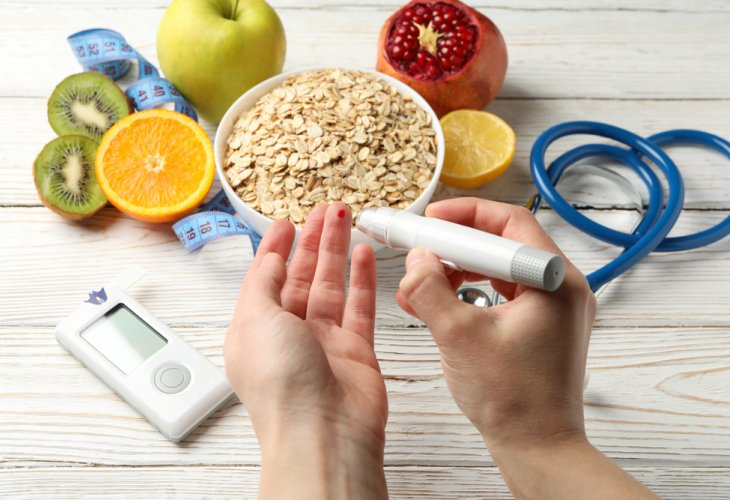Diabetes Symptoms and Prediabetes - Warning Signs
How to recognize diabetes, what is prediabetes, and how do you know it exists? All the essential information for your health.
 (Photo: shutterstock)
(Photo: shutterstock)Diabetes is a metabolic disease characterized by high sugar (glucose) levels in the blood. In Latin, the medical term is Diabetes mellitus, meaning "sweet urine." Why? Because when the blood sugar level rises above a certain threshold, it exceeds the kidneys' absorption ability, resulting in the excess sugar being excreted in the urine – a condition known as glucosuria.
The main issue with diabetes is a relative or absolute lack of the hormone insulin. Insulin is produced in the pancreas and secreted into the blood in response to increased sugar levels, promoting cell growth and multiplication. It allows sugar to pass from the blood into body cells, where it is needed for energy production, crucial for normal cell function. The primary role of insulin is to regulate blood sugar levels.
General Symptoms of Diabetes
Frequent urination - the kidneys clear excess glucose from the blood that would normally enter body cells.
Dry mouth and thirst - frequent urination depletes the body's fluids, causing many patients to feel dryness in their mouth and throat.
Increased hunger and weight loss, although eating amounts have not changed - sugar that should have entered cells is excreted in urine. The body does not receive calories and demands more carbohydrates, which break down into simple sugars but are excreted in the urine.
Constant fatigue - sugar is meant for energy production. Without it, there is no energy. Another reason for fatigue is frequent nighttime urination, which affects sleep quality.
Sensory disturbances and pain in limbs - various uncomfortable sensations in the legs, numbness, a feeling of limbs falling asleep, illnesses, and disorders mainly in the lower extremities, pain in foot soles. All these symptoms result from poor blood circulation.
Prediabetes
Prediabetes is a condition where blood sugar levels are elevated but not yet high enough for a diabetes diagnosis. It indicates an increased risk of developing adult-onset diabetes. Important to know! This is a reversible condition, treatable with proper nutrition and physical activity tailored to balance blood sugar levels and prevent the transition from prediabetes to diabetes.
Type 2 diabetes is caused by the body's tissues resisting insulin. Prediabetes appears earlier, involving an initial decline in tissue sensitivity to insulin and a gradual rise in blood sugar levels. Those with this condition experience increased sugar levels after consuming carbohydrates, which can be seen in blood tests, yet are still lower than diagnostic diabetes levels.
About half of those diagnosed with prediabetes may develop diabetes within 4-5 years. Studies show that about ten percent will develop type 2 diabetes within the first year of prediabetes detection. The risk increases significantly for individuals with one or more of the following risk factors: family history of diabetes, past gestational diabetes, abdominal obesity, high blood pressure, high triglycerides, or high cholesterol. Prediabetes indicates an increased risk of developing adult-onset diabetes.
The Danger of Prediabetes
Prediabetes doesn’t manifest symptoms that disrupt daily life, yet the body experiences functional disturbances: it cannot utilize sugar and insulin reserves for energy creation as before, pancreatic function is impaired, and it struggles to produce large amounts of insulin when needed. Moreover, heart and blood vessel disorders may develop.
Symptoms of Prediabetes
Prediabetes symptoms include persistent fatigue, lack of concentration, overweight, and abdominal obesity. Most with prediabetes have a higher than desired BMI. Additional symptoms accompany prediabetes: depression and mood swings. Laboratory tests show increased cholesterol and blood fats, as well as high blood pressure. Prediabetes can be diagnosed through blood tests.
Prediabetes is reversible, and it serves as a warning for those affected to take care of themselves and change their lifestyle, as it is possible and advisable to treat it with the various available means such as dietary changes, physical activity, and continuous glucose monitoring without pricks, enabling knowledge of blood sugar levels at any time, to balance blood sugar and prevent future complications from overt diabetes.
Prof. Julio Weinstein, Director of the Diabetes Unit at Wolfson Medical Center and Senior Diabetes Physician at DMC Center for Diabetes Treatment

